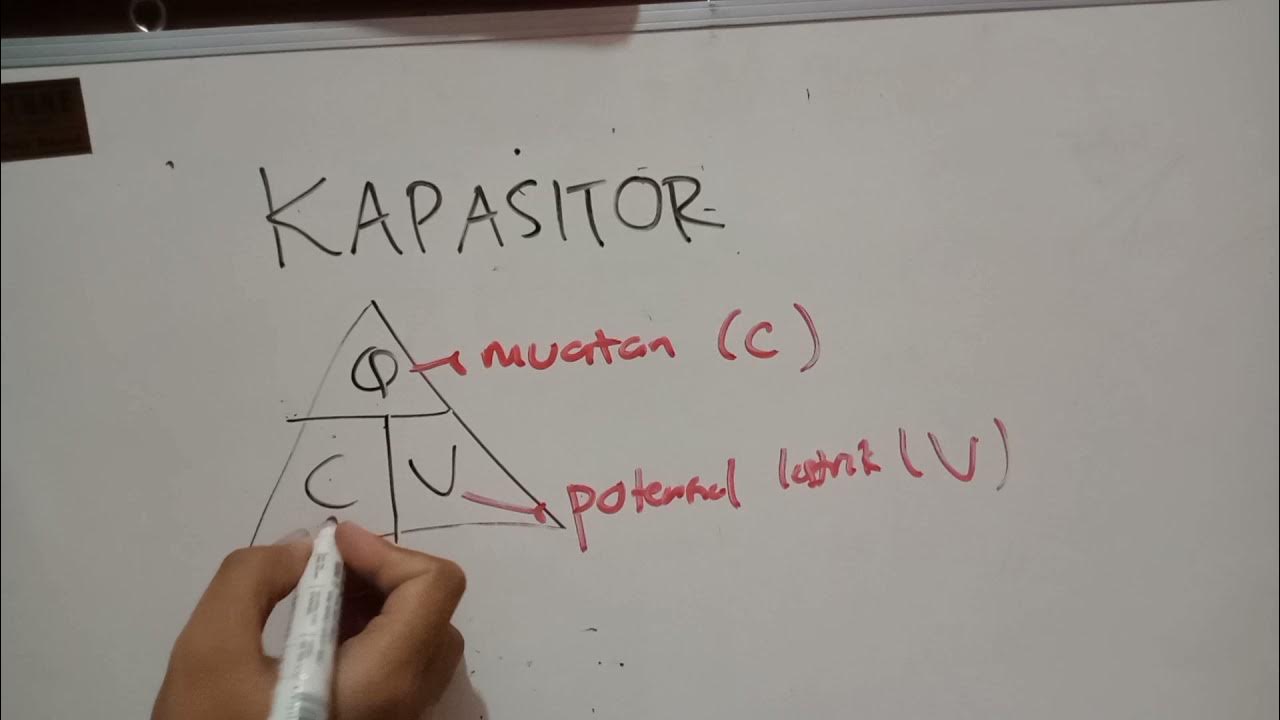Capacitors and capacitance | Circuits | Physics | Khan Academy
Summary
TLDRThis video explains the concept of capacitors, focusing on how they store charge and their key properties. A capacitor consists of two conductive plates separated by an insulating material, and when connected to a battery, it stores charge. The voltage across the plates increases until it matches the battery's voltage, at which point charge accumulation stops. The capacitance of a capacitor indicates its ability to store charge, and is defined as the ratio of charge to voltage. The video also clarifies that capacitance depends on the physical characteristics of the capacitor, not just the charge or voltage.
Takeaways
- 😀 A capacitor consists of two pieces of conducting material separated by an insulating material, like paper.
- 😀 Capacitors store charge when connected to a battery, with negative charges being attracted to the positive terminal of the battery.
- 😀 The amount of charge stored on each side of the capacitor is always equal in magnitude but opposite in sign.
- 😀 Electrons, which are negatively charged, move freely through metals or wires, while positively charged protons stay in place.
- 😀 The charging process in a capacitor stops when the attractive forces between the negative charges and the positive side are balanced.
- 😀 Once the battery is disconnected, the charge remains on the capacitor's plates, as there is no path for the charges to neutralize.
- 😀 Capacitors use insulating materials to prevent the conducting plates from touching, ensuring charge separation.
- 😀 The capacitance of a capacitor is a measure of how much charge it can store and is determined by the formula: Capacitance = Charge / Voltage.
- 😀 A capacitor with a high capacitance can store a large amount of charge, while one with low capacitance stores only a small amount.
- 😀 Capacitance is measured in farads (F), where 1 farad equals 1 coulomb per volt.
- 😀 The capacitance of a capacitor remains constant regardless of changes in charge or voltage; altering the physical properties of the capacitor is required to change capacitance.
Q & A
What is a capacitor?
-A capacitor is a device that stores charge. It consists of two pieces of conducting material separated by an insulator, typically used to accumulate electrical charge.
What is the function of the paper inside a capacitor?
-The paper inside a capacitor acts as an insulator to ensure that the two pieces of metal do not touch each other, preventing a short circuit.
Why do capacitors store charge?
-Capacitors store charge by connecting to a battery. The negative charges move towards the positive terminal of the battery, and the positive charges on the metal plates are displaced, creating an imbalance of charge.
Why do the charges on both sides of the capacitor have equal magnitude?
-The charges on both sides of the capacitor must have equal magnitude because for each negative charge that leaves one metal plate, exactly one negative charge is deposited on the other plate.
What happens when the negative charges on the right side of the capacitor get attracted to the positive piece of metal?
-Once the negative charges are attracted to the positive piece of metal and the process of charge redistribution reaches equilibrium, the charging process stops, and the charges will remain stationary, even if the battery is removed.
Why must the two pieces of metal in a capacitor be separated?
-The two pieces of metal must be separated to prevent them from touching and allowing the charges to flow in a loop, which would prevent charge separation and capacitor functionality.
What does the capacitance of a capacitor indicate?
-Capacitance is a measure of a capacitor's ability to store charge. A higher capacitance means the capacitor can store more charge.
How is capacitance calculated?
-Capacitance is calculated using the formula: capacitance = charge stored on the capacitor (Q) divided by the voltage across the capacitor (V).
What is the unit of capacitance, and who is it named after?
-The unit of capacitance is the farad (F), named after the English physicist Michael Faraday.
Does increasing the charge stored on a capacitor change its capacitance?
-No, increasing the charge stored on a capacitor does not change its capacitance. The capacitance remains constant unless the physical characteristics of the capacitor, such as the size of the metal plates or the distance between them, are altered.
Outlines

This section is available to paid users only. Please upgrade to access this part.
Upgrade NowMindmap

This section is available to paid users only. Please upgrade to access this part.
Upgrade NowKeywords

This section is available to paid users only. Please upgrade to access this part.
Upgrade NowHighlights

This section is available to paid users only. Please upgrade to access this part.
Upgrade NowTranscripts

This section is available to paid users only. Please upgrade to access this part.
Upgrade NowBrowse More Related Video
5.0 / 5 (0 votes)





